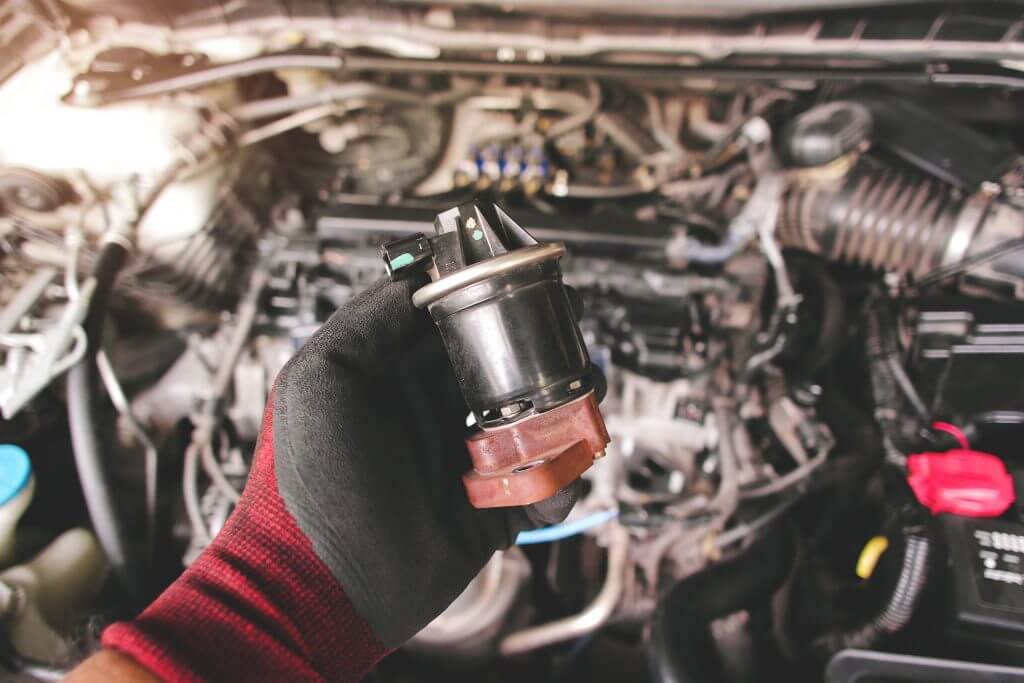What is an EGR valve, and how does it work?
“EGR” stands for exhaust gas recirculation. When engine combustion temperatures near 2500°F, the formation of smog-producing nitrogen oxides (NOx) increases. Exhaust, however, is mostly composed of carbon dioxide (CO2), which does not burn. The function of the EGR valve is to recirculate small amounts of exhaust back into the combustion chambers of the engine in order to decrease the combustion temperature, thereby reducing the formation of smog-producing nitrogen oxides. EGR valves can malfunction by becoming stuck open or closed due to carbon buildup. When an EGR valve malfunctions, CO2 is reintroduced to the combustion chamber at the incorrect time or in incorrect amounts, which does not decrease the combustion temperature sufficiently enough to prevent the increase of NOx. Often times, EGR Valves are replaced unnecessarily due to clogged EGR ports that need to be cleaned. Many times cleaning the EGR ports alone will resolve concerns.
When does an EGR valve need to be replaced?
Symptoms of a malfunctioning EGR valve include:
- Check Engine Light is on for an EGR fault and ports are confirmed clean
- Pinging and/or knocking sounds
- Rough idle
- Reduced power
- Reduced fuel economy
- Engine stalling/hesitation when accelerating
Tools + Parts Checklist:
How To Replace EGR Valve
- Put the vehicle in park and apply the emergency brake. Consult your owner’s/repair manual to locate the EGR valve.
- Turn off the engine and disconnect the battery.
- Inspect all vacuum lines for rips, tears, and holes. Replace as necessary.
- Remove the vacuum line or unplug the electrical connector from the EGR valve.
- Remove the bolts that hold the EGR valve to the cylinder head or intake manifold.
- Remove the EGR valve. Be careful to protect the open cylinder head or intake manifold from any debris. Tech Tip: Clean the EGR ports while you are this far into the system (reference this article to learn how to clean the EGR ports while you’re in there)
- Bolt on the new EGR valve and attach the vacuum line or plug in the electrical connector.
- Reconnect the battery.
- Start the car and use the diagnostic tool to check for any codes and reset the check engine light.
- Do a test drive to ensure the engine is running and idling smoothly.

At FIXD, our mission is to make car ownership as simple, easy, and affordable as possible. Our research team utilizes the latest automotive data and insights to create tools and resources that help drivers get peace of mind and save money over the life of their car.














